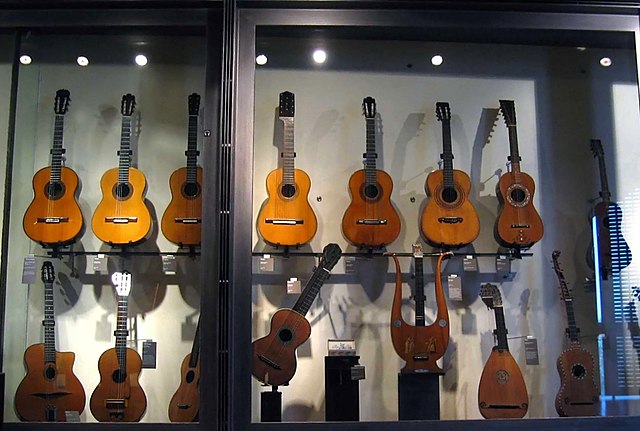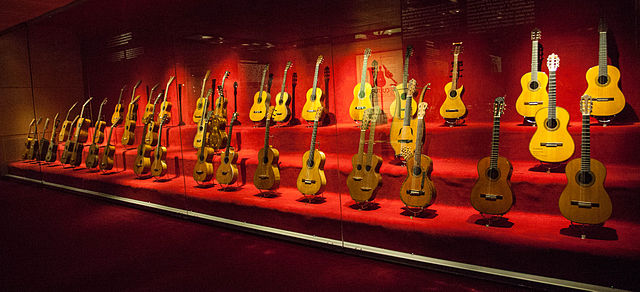The classical guitar, also called modern classical guitar, is a member of the guitar family used in classical music and other styles. An acoustic wooden string instrument with strings made of gut or nylon, it is a precursor of the modern steel-string acoustic and electric guitars, both of which use metal strings. Classical guitars derive from instruments such as the lute, the vihuela, the gittern, which evolved into the Renaissance guitar and into the 17th and 18th-century baroque guitar. By the mid-19th century, early forms of the modern classical guitar appear. Today's modern classical guitar was established by the late designs of the 19th-century Spanish luthier, Antonio Torres Jurado.
Guitars from the Museum Cité de la Musique in Paris (which houses almost 200 classical guitars)
19th century guitar made by Manuel de Soto y Solares, held by Spanish guitarist Rafael Serrallet
Guitarra Latina (left) and Guitarra Morisca (right)
History of guitars (exhibited at Deutsches Museum)
The guitar is a stringed musical instrument that is usually fretted and typically has six or twelve strings. It is usually held flat against the player's body and played by strumming or plucking the strings with the dominant hand, while simultaneously pressing selected strings against frets with the fingers of the opposite hand. A guitar pick may also be used to strike the strings. The sound of the guitar is projected either acoustically, by means of a resonant hollow chamber on the guitar, or amplified by an electronic pickup and an amplifier.
Instrument labeled "cythara" in the Stuttgart Psalter, a Carolingian psalter from 9th century Paris.
19th-century guitar made by luthier Manuel de Soto held by Spanish guitarist Rafael Serrallet
Guitar collection in Museu de la Música de Barcelona
The Guitar Player (c. 1672), by Johannes Vermeer







